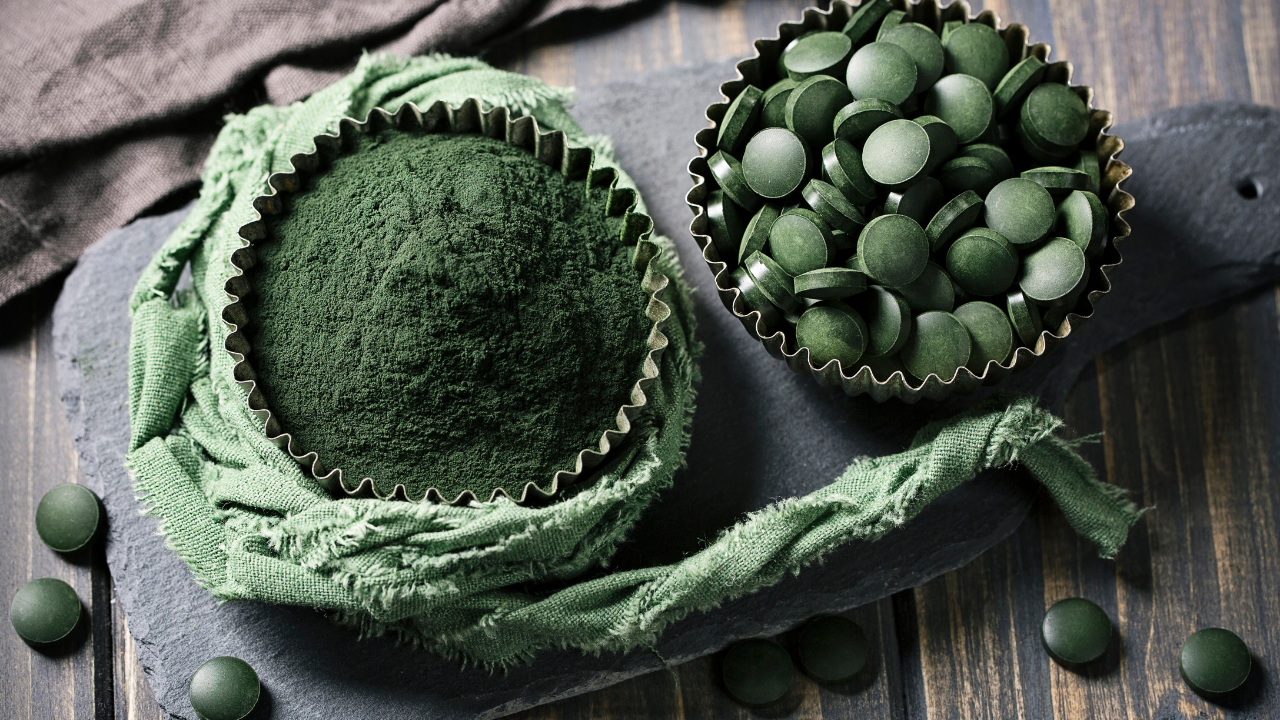How Blue-Green Algae can help with Brain Health and Anxiety
Mar 01, 2021
Blue-green algae (Cyanobacteria) are some of the most nutrient-dense foods on the planet. You can find blue-green algae, such as spirulina and chlorella, marketed under various product names. Algae are found in almost every terrestrial and aquatic habitat: oceans and freshwater ponds and lakes, damp soil, and moist rocks in the deserts—even in Antarctic rocks! This pervasive life-form owes its superfood status to its high concentrations of protein, vitamins, and minerals. Through photosynthesis, it turns sunlight into oxygen in water.1
WebMD reports that people use blue-green algae for boosting the immune system, improving memory, and otherwise assisting with good brain health, increasing energy and metabolism, and improving digestion and bowel health.2
You can buy blue-green algae in a loose powder or capsule form. As for dosage, read package labels. You need only a tiny amount—perhaps a teaspoon or less per day. Too much can cause diarrhea.
Most powders are dark green. The Blue Majik powder is the most magical, sparkly blue I have ever seen. For visual appeal, I sometimes use this vibrant product in raw vegan desserts. You can also sprinkle it on your oats or cereal or mix it into your smoothies. Check out the Brain Smoothie recipe that includes spirulina!
Chlorella is a blue-green algae containing linoleic acid (omega-6 fatty acid), chlorophyll, and a lot of nutrients, including antioxidants, that help to repair DNA. One six-week study gave a chlorella supplement to people who smoked cigarettes. Participants who received the supplement experienced a 44 percent increase in blood levels of vitamin C, a 16 percent increase in levels of vitamin E, and a significant decrease in DNA damage.3
You can buy chlorella in capsules, liquid, or loose powder. It makes a terrific addition to smoothies.
Here is the Chlorella I recommend: from Amazon and from Vitacost.
Spirulina has become known as a superfood because it is incredibly nutrient-dense. It’s packed full of vitamins, including A, C, E, and a range of Bs, as well as a whole host of minerals, such as calcium, iron, magnesium, selenium, and zinc. Along with all these important nutrients, spirulina helps reduce anxiety because it contains omega-3 fatty acids and chlorophyll. It can help protect our cells and tissues from damage and increases healthy microflora in the gut.4
Civilizations as far back as the Aztecs in the 16th century (and most likely much earlier—that’s just recorded history) have used spirulina as food.5 Due to its high protein content, NASA has used spirulina as a dietary supplement for its astronauts during space missions.6 While chlorella and spirulina both contain high amounts of protein, studies have indicated that some strains of spirulina can contain up to 10 percent more protein than chlorella and the protein found in spirulina is also very well absorbed by the body.7
You can take spirulina in a capsule form. Personally, I love to add a teaspoon of it to my smoothies. I enjoy the taste, and you don’t add much, so the taste isn’t overpowering.
Caution: Check with your doctor before consuming spirulina, as people with allergies to seafood, seaweed, and other sea vegetables may want to avoid it. If you have a thyroid condition, an autoimmune disorder, gout, kidney stones, phenylketonuria (PKU), or are pregnant or nursing, spirulina may not be appropriate for you. It also can possibly interfere with blood-thinning medication.
Here is the spirulina I recommend from Amazon and from Vitacost.
Spirulina and Chlorella are also both ingredients in my Liana's Organics Anxiety-Free Supplement. It has 10 all-natural, Organic, non-GMO ingredients, including Spirulina and Chlorella. You can learn more about them here.

This is an excerpt from my latest book, Anxiety-Free with Food. To read more about this topic, get the book HERE.

RESOURCES:
1. Fondriest Environmental, Inc., “Algae, Phytoplankton and Chlorophyll,” Fundamentals of Environmental Measurements (October 22, 2014), https://www.fondriest.com/
2. “Blue-Green Algae,” WebMD (accessed April 8, 2020), https://www.webmd.com/
3. S.H. Lee, et al., “Six-Week Supplementation with Chlorella Has Favorable Impact on Antioxidant Status in Korean Male Smokers,” Nutrition, vol. 26, no. 2 (February 2010), pp. 175–83, doi: 10.1016/j.nut.2009.03.010.
4. P.D. Karkos, et al., “Spirulina in Clinical Practice: Evidence-Based Human Applications,” Evidence-Based Complementary and Alternative Medicine, vol. 2011 (October 19, 2010), p. 531053, doi: 10.1093/ecam/nen058.
5. M. Watson, “The History of Spirulina: From Nutrition Provider to Vivid Color,” Watson, Inc. blog (April 25, 2017), https://blog.watson-inc.com/
6. P.D. Karkos, et al., “Spirulina in Clinical Practice: Evidence-Based Human Applications,” Evidence-Based Complementary and Alternative Medicine, vol. 2011 (October 19, 2010), p. 531053, doi: 10.1093/ecam/nen058.
7. S. Lordan, R.P. Ross, and C. Stanton, “Marine Bioactives as Functional Food Ingredients: Potential to Reduce the Incidence of Chronic Diseases,” Marine Drugs, vol. 9, no. 6 (2011), pp. 1056–1100, doi: 10.3390/md9061056.


